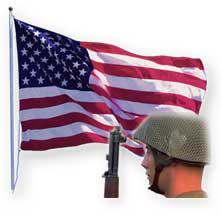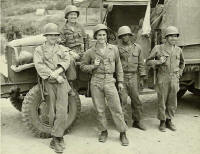|
We need your help to keep the KWE online. This website
runs on outdated technology. We need to migrate this website to a modern
platform, which also will be easier to navigate and maintain. If you value this resource and want to honor our veterans by keeping their stories online
in the future, please donate now.
For more information, click here.
|
|||||||||||||||
 |
|||||||||||||||
| Back to "Memoirs" Index page | |||||||||||||||
 |
Capt. M. W. GossLewisburg, PA - "Pennsylvania's 176th armored field artillery battalion, has done so well on the line that regular army forward observers have been flabbergasted by the accuracy of the unit's fire." - M. W. Goss
|
||||||||||||||
In combat... In Koreaby Capt. M. W. Goss, S -- 3, 176th armored field artillery battalion
With I corp, U. S. army in Korea for a guard unit that had to squeeze 28 weeks into six weeks of the intensive training to meet a deadline for shipment to Korea, where it was given only five more weeks to train before entering combat, Pennsylvania's 176th armored field artillery battalion, has done so well on the line that regular army forward observers have been flabbergasted by the accuracy of the unit's fire. Commanded by Lt. Colonel Fred B. Fiigon, upon its entry into active federal service 19 Aug. 1950, the outfit moved to Camp Carson, Colorado. For 12 hours a day and often seven days a week it worked like mad to be ready for embarkation on one November, with only 60 percent of its authorized manpower and 30 percent of its equipment, the necessary equipment arrived at the dock; meantime, filler strength had come from regular and reserve units and some already inducted guard unit's is. The 176th landed at Pusan on 17 February, trained at nearby Kumhae and passed its I Corp. artillery Hq, training test with flying colors. In the first days of April the outfit debarked at Inchon and reinforced the 159th field artillery Battalion, 25th infantry division, then firing in direct support of the 24th infantry. During those early weeks the 176th supported both armored task force's and infantry Battalion's engaged in special penetration missions. During the Chinese spring offensive the 176th slammed the proverbial door in the face of one Communists attack after another. On their 16th day of combat, the Pennsylvanians were supporting the 27th infantry. For Chinese buildups, when the 27th received the brunt of the attack, the 176th howitzers howled from 0300 until 0530. The Chinese pulled back, their giant offensive rolling off to the east, to crack the lines of the 6th ROK division, and to the west, where a wedge was driven between the Turkish Brigade and the third infantry division when it will all over for the 27th, the second Battalion commander thanked the 176th for its devastating fire support. He said that more than 700 dead Chinese were counted before two out his company's. On 25 April the Battalion became a part of the 11TH ROK- American regimental combat team, first Rok division along the Imjin River, the 176th sent liaison officers to the Battalion, but the South Koreans furnished the forward observers an interpreter team stayed at the 176th FDC and worked with S. -- 3 in the conduct of fire. In the outskirts of Seoul the 176th guns enabled the fighting ROKs daybreak contact with the enemy and withdraw toward the city, thereby frustrating an attempted Communists flanking movement. Again the Chinese threw everything they had at the razed capital is the idea of recapturing the entire Seoul and Inchon area. Using slightly more than 700 rounds of ammunition the Pennsylvania unit broke up this one also, accounting for more than 300 of the enemy. 28 days following their withdrawal from the Imjin River, 176th artillery men returned -- veterans with a vengeance! Throughout those first 44 days of combat the Batallion fired 1357 tons of 105 ammunition and inflicted more than 5000 casualties. The scorekeepers figure that in 1397 fire missions the 176th has knocked out some 23 mortars, twelve artillery pieces, two tanks, 31 machine guns, four vehicles, 2 enemy occupied villages, 2 ammunition and 2 gasoline dumps. Despite the constant grind of missions and more missions, large groups of the unit are being sent in Japan each month for rest in recuperation. The unit also operates a rest Camp in in-service battery area, miles from the front. |
|||||||||||||||
|
|||||||||||||||
 |
|||||||||||||||


